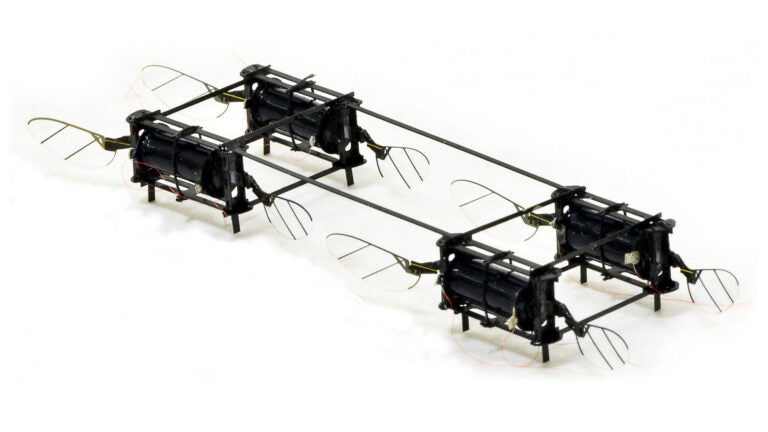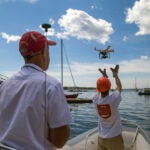Bee bots: MIT professor develops tiny durable drones that behave like insects
The drones can flap their wings nearly 500 times a second — more than twice as fast as a bee.

It’s a bird! It’s a bee! It’s a bot!
A team of researchers led by an MIT professor have developed tiny drones that can fly, dodge, and weave like actual insects. In other words, the resilient bots can float like a butterfly — but fortunately, unlike a certain “Black Mirror” invention, they’re not able to sting like a bee.
Most drones, while powerful, are quite bulky and more fragile than agile. So what if you want something that can navigate dense forests or cluttered indoor spaces, something that could weave between obstacles and handle impacts? The key to the buzzy bots’ dexterity, durability, and diminutive size is its novel actuator, the element responsible for the machine’s movement.
Instead of a hard and inflexible actuator like a typical electric motor, the ones in the drones are made of thin and flexible rubber cylinders coated in carbon nanotubes. The cylinder rapidly contracts and expands when voltage is applied to the nanotubes, which flaps the drone’s wings nearly 500 times per second. That’s 50 times faster than a typical hummingbird and over twice as fast as a bee. And like an actual insect, it can handle a mild swatting.
“You can hit it when it’s flying, and it can recover,” said assistant professor Kevin Yufeng Chen in a release. “It can also do aggressive maneuvers like somersaults in the air.”
He said that the 0.6 gram drones — about the weight of a bumblebee — could provide insights into the physics of insect flight. But they could be used for more practical purposes too, like pollinating crops, searching across areas hit by disasters, and inspecting machinery.
“Think about the inspection of a turbine engine,” he said. “You’d want a drone to move around [an enclosed space] with a small camera to check for cracks on the turbine plates.”
But the robots aren’t able to do much yet. They’re currently powered via thin wires, which end up essentially doubling as a restrictive tether. The next challenge is developing an alternative power source that would let the drones truly roam free.
Get Boston.com's browser alerts:
Enable breaking news notifications straight to your internet browser.







Conversation
This discussion has ended. Please join elsewhere on Boston.com